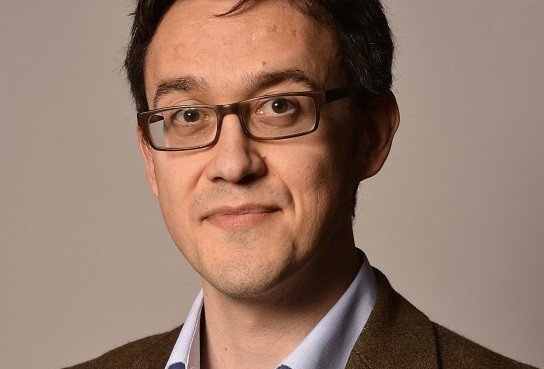The Great Kantō earthquake: a 1923 disaster that left Tokyo in ruins
In 1923, at a time when a reinvented Japan had bloomed as a global power, a violent earthquake razed the country's bustling imperial capital and killed more than 100,000 people. Christopher Harding explores the events and aftermath of the disaster – and its pivotal cultural and physical legacy
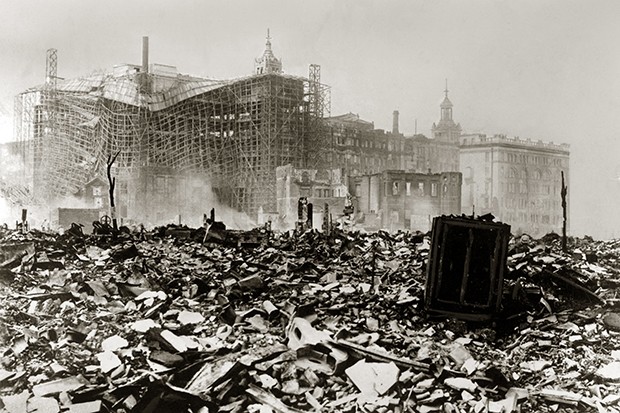
Shortly before noon on 1 September 1923, people in Tokyo and the nearby port city of Yokohama felt the ground beneath them shake. It was not especially unnerving: this region of Japan, the Kantō Plain, stood at the meeting point of four tectonic plates. Tremors were common, and usually passed after a few seconds. On this occasion, though, they continued – for five seconds, then 10 – and were so powerful that people were forced to reach out to steady themselves and catch possessions as they fell.
After around 15 seconds, side to-side movement suddenly gave way to something much worse: violent vertical convulsions of such devastating power that they could be felt as far away as Spain in one direction and California in the other. In past centuries, some in Japan had associated earthquakes with the restive movements of a giant catfish living deep within the Earth. People in Tokyo and Yokohama now gained a visceral, terrifying sense of why that belief might have taken root.
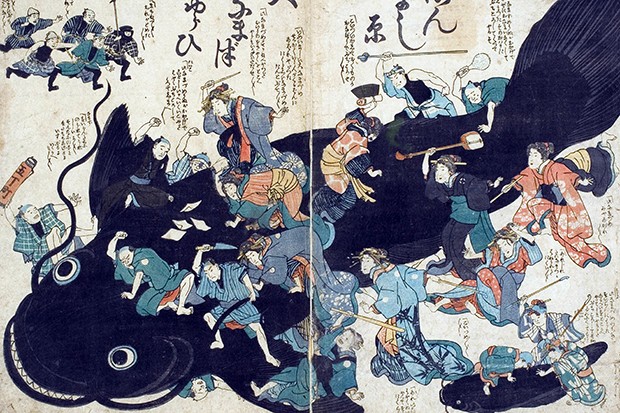
The shockwaves caused the ground beneath their feet to undulate. Objects did not just fall – they jumped off the floor, accompanied by an angry, ominous rumble that was soon drowned out by the noise of brick and concrete buildings collapsing, tiles crashing from roofs and people shouting and screaming.
The cacophony briefly gave way to an eerie quiet as people took in what had happened. Stepping out of homes or shops to survey the landscape around them, they began to think of relatives and friends – and the need to escape. As the first of many hundreds of aftershocks arrived, the streets of Tokyo filled with people trying to flee to the countryside. The prospect of further tremors to come was worrying enough; far worse was the peril that some could already smell on the air: fire.
More like this
Tokyo: centre of a revitalised nation
In 1923, Tokyo was a city in transition. Barely half a century before, in 1868, a cadre of ambitious young samurai had led an armed revolt, overthrowing the Tokugawa shogunate. Their vision, fulfilled with extraordinary speed in the decades that followed, had been to build up Japan’s economy, industry and military might. Victorious in war against first China in 1895 then Russia 10 years later, Japan was now one of the world’s great powers. Its international standing had been confirmed in 1922 with the signing of the Washington Naval Treaty, intended to balance naval construction by major maritime players: the US, the UK, France, Italy and Japan.
Tokyo stood at the centre of this revitalised nation. It was the seat of a fledgling democracy and the home of the emperor, in whom ultimate authority rested. Industrial magnates such as Shibusawa Eiichi – the ‘father of Japanese capitalism’ – had homes, offices and factories in Tokyo. The capital had been expanding rapidly in recent years, with new railway lines spreading like tentacles into the surrounding countryside and new neighbourhoods growing up around them. Large-scale migration from rural areas saw Tokyo’s population boom from around 1 million in the Tokugawa era (when the city was known as Edo) to 4 million by 1923.
The hustle and bustle of the capital was celebrated in literature, art and popular song, but not even the most loyal of Tokyoites would claim that its swift growth seemed planned or pretty. The streets were narrow, the buildings tightly packed, and telegraph and telephone wires hung lattice like over a constant stream of traffic – pedestrians, rickshaws and trams. Most ominously, Tokyo combined several major risk factors: residential buildings constructed with wood and paper; a network of gas pipes; and the widespread use of charcoal fires for cooking.
The earthquake struck just as people were preparing lunch. Cooking fires were overturned by the shocks, and blazes flared across the city. Sparks flew, hot air was channelled down narrow streets, and whirling firestorms engulfed entire neighbourhoods. Many of those who tried to escape did so with little thought of returning. Far from fleeing with just the clothes on their backs, one observer saw a man struggling under the weight of an entire chest of drawers.
The streets were narrow, the buildings tightly packed, and telegraph and telephone wires hung lattice like over a constant stream of traffic…
This helped to turn the city’s many river and canal bridges into bottlenecks, leaving people unable to move as the smoke thickened around them and sparks rained down – starting more and more fires. As day turned to night, food, water and reliable news became in desperately short supply. Some expected a tsunami to hit Tokyo, or feared a second earthquake. Still others heard that Mount Fuji was about to erupt.
Anti-Korean violence
Alongside rumours of impending natural catastrophe, claims spread that the city’s Korean population was rising up – looting, killing, poisoning wells and setting new fires. Tokyo was an imperial capital not just in the sense that it hosted an emperor. An important dimension of Japan’s rise to great power status was its growing colonial empire in Asia. By 1923, its imperial territories encompassed Taiwan, the Liaotung peninsula – a small but strategically valuable portion of Manchuria – and Korea, which had been annexed in 1910 at the cost of nearly 12,000 Korean lives.
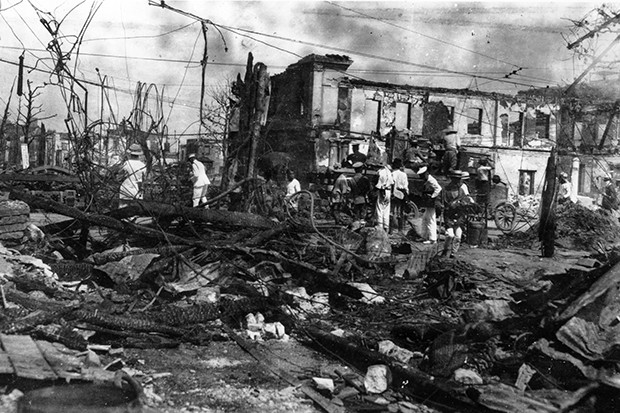
Anti-colonial feeling in Korea remained fierce, and people in Japan knew it – though they were encouraged by schools and newspapers to imagine themselves as a civilising force in Asia, in much the same way as the British and French populations were taught to feel about their own empires. This view, combined with a low opinion of Koreans shaped by the political rhetoric and racial pseudoscience of the era, made it seem plausible to some Tokyoites that their city’s Korean population might use the unfolding disaster to seek revenge.
Some citizens appear to have been simply thugs and opportunists, robbing and killing Koreans under the guise of maintaining law and order. They did so with the support of police officers and soldiers, some of whom had served on the Korean peninsula and were only too happy to fan the flames of anti-Korean sentiment. As many as 6,000 Koreans may have been killed – and it might have been many more had not some Japanese taken it upon themselves to hide and protect their Korean neighbours. Thousands more Koreans were taken into protective custody.
Smoky hellscape
It took around a week for some semblance of order to be restored in Tokyo. Survivors who made their way back into the city at this point, in search of relatives and whatever might be left of their homes, resorted to the language of religion and myth to relay what they encountered there. The scene that greeted them resembled something out of a Buddhist morality tale: a hellscape through the smoke and stench of which people were compelled to trudge, turning over charred corpses in search of loved ones.
Martial law was declared in Tokyo on 2 September, and remained in force throughout the autumn as the authorities rushed to get water, food and medical aid into the capital. Tens of thousands of people had sought refuge in open spaces, including around the imperial palace where some could be found washing the soot from their bodies in the moat. Supplies began to flow in from across Japan, and later from around the world – the American Red Cross alone raised $12m.
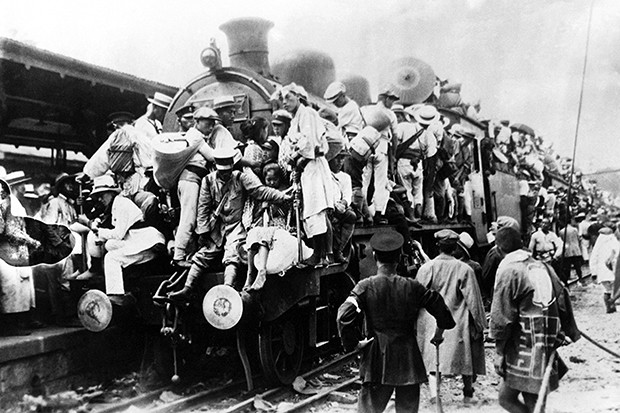
Roads and railways were steadily cleared or repaired in order to bring in supplies over land, while warships and merchant vessels brought rice and other goods by sea. For a few agonising days, starving residents watched the ships waiting, fully laden, at anchor while Tokyo’s docks were repaired and their cargoes could be unloaded onto shore.
Returning to his neighbourhood six days after the fires began at last to die down, the writer Tanaka Kōtarō recalled crossing over a river full of bodies “swollen like sumo wrestlers” and floating alongside abandoned possessions. Other bodies were stacked “like charred, dried sardines”, awaiting cremation. An unforgettable “fatty stench” accompanied those cremations, wafting on the air along with the faint sound of Buddhist sutras being recited for the souls of the departed.
For a few agonising days, starving residents watched the ships waiting, fully laden, at anchor while Tokyo’s docks were repaired
By this time, more than 100,000 people were dead, and over half of Tokyo’s population had been left homeless. Few Japanese believed that a giant catfish was responsible for all this destruction. Yet, over the weeks and months that followed, the temptation was strong to believe that the earthquake had meaning – or that it should be given meaning. In the short term, critics focused on the unpreparedness of the municipal authorities. The risk of earthquakes, compounded by fire, was well known. Why didn’t Tokyo have a plan?
After restrictions on reporting were lifted in October, and the murder of Koreans became national news, people began to ask what this extraordinary brutality said about a supposedly civilised country. Could it all be blamed on criminals, opportunists and corrupt police – a combination that one might find anywhere in the world – or was there cause here for serious soul-searching?
Many answers were offered, but a general view was that one contributing factor was the country’s direction of travel in recent years. Some living in the countryside observed that rural Japan had been sacrificed in the interests of its towns and cities. With so much of the country’s political, economic and cultural life concentrated in urban centres such as Tokyo, farmers worried that they were not so much citizens or valued imperial subjects as simply the means by which rice travelled from the earth into urbanites’ bellies.
For one farmer in Ibaraki prefecture, the earthquake was a cosmic judgment against the creators and sustainers of this system. “With their elegant clothes and their gold teeth, gold rings and gold watch chains, they flitted from one lavish social affair to another,” he wrote. “But now all that has vanished as if in a dream, consumed by fire, and suddenly they find themselves reduced to misery. It seems that heaven found it necessary to chastise them with a natural disaster in order to protect the nation.”
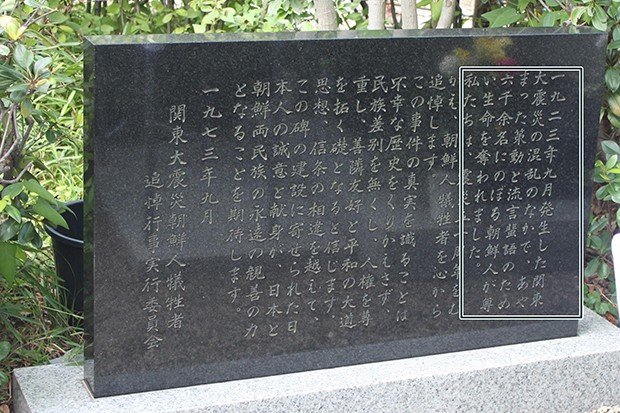
Other commentators, working within a long-established tradition of vexed introspection about the state of the country, took a broader historical view. They noted souring industrial relations of late, alongside a disastrous leftward turn in politics, a shallow consumer culture shaped by western ideas and fashions, and withering national resolve. Japan had passed through a time of heroes, they claimed, beginning with the overthrow of the faltering Tokugawa shogunate in 1868 and ending with the death of the Meiji Emperor in 1912.
A modern nation had been built through a combination of far-sightedness, hard work and national spirit. That era had since given way to softness, confusion of purpose and self-seeking among the young. Back in 1898, a statue had been erected in Tokyo’s Ueno Park of one of the great men of that earlier era, Saigō Takamori. All that could now be seen from his vantage point was a ruined, smoking city: evidence if not of divine judgment then of administrative failure and people’s willingness to turn on one another in time of disaster.
The more hawkish of commentators spied strategic peril. They regarded the Washington Naval Treaty of 1922 not as a welcome sign of Japan’s high status but rather as a betrayal by spineless Japanese diplomats: too much had been conceded to rivals with whom they might well one day end up at war. If the will of the Japanese people could be broken so easily, what hope was there should Japan’s cities, towns and villages become the home front in some future conflict – one that would surely involve the deployment of air power against urban infrastructure?
Tokyo had to be rebuilt – but so, too, must the national character. Japan’s prime minister and his cabinet duly began to look at ways in which moral education in schools could be improved. Boy Scouts were sent into what remained of Tokyo and Yokohama to collect stories of heroism and self-sacrifice.
At the same time, politicians and planners who had long recognised the downsides of Tokyo’s rapid modern expansion – from overcrowding to poor sanitation – set to work reimagining the capital. Japan’s home minister, Gotō Shinpei, aimed to rebuild Tokyo with open spaces, firebreaks, buildings of limited height (to minimise future earthquake casualties), and an efficient road and transport network. Heavy industry should, meanwhile, be moved out of the city, and measures taken to avoid the return of slums.
- On the podcast | The big questions about the history of Japan
Dreams soon bumped up against the reality of limited funds, political rivalries and the endless legal headaches of re-planning a city where buildings had been destroyed but land rights remained intact. The results that had been achieved by 1930 fell some way short of the utopian hopes expressed in the after math of the disaster. Tokyo did, though, get wider paved roads, new and upgraded bridges, modern water and sewage systems, and major new parks complete with playgrounds and baseball diamonds. For Tokyoites living near the poverty line, the authorities built public dining halls and baths, cheap lodging houses and pawnshops: better to part with one’s belongings than fall prey to moneylenders.
The new Tokyo: ripe for destruction?
Watching all this with keen interest were American military planners. Charged with war-gaming a future conflict with Japan, they noted which parts of the city had burned best in 1923. They noted, too, the compromises that were made in its reconstruction, not least the failure to invest in fireproof materials for new buildings. Their homework paid off.
The Japanese authorities looked forward to welcoming the world to a rebuilt Tokyo in 1940, when Japan was to hold the Olympic Games – the first Asian nation to do so. But the 1930s did not pan out as hoped. Rogue elements in the armed forces, emboldened by the calls for unity, strength and the preservation of Japanese culture that followed the earthquake, launched Japan on a path to war with China and, ultimately, the UK and the US.
In 1923, pictures of what became known as the Great Kantō Earthquake appeared in the US press, accompanied by sympathy and calls for charity. Two decades later, they appeared in US propaganda, captioned with derisive talk of “the house the Jap built” – frail, vulnerable and ripe for destruction by “American guns and bombs”. So it proved when devastating air raids were launched on Tokyo and other Japanese cities in the spring of 1945.
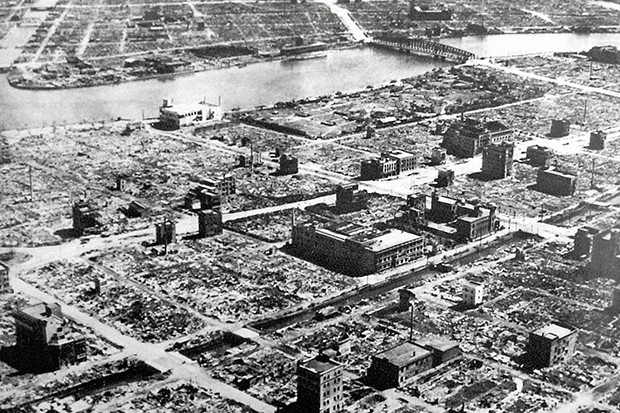
As the Shōwa Emperor himself admitted long after the end of the Second World War, had Tokyo been rebuilt in the way that those such as Gotō Shinpei had called for, it might have better survived the firebombings of March 1945. As it was, another 100,000 lives were lost, and a quarter of the Japanese capital was again destroyed. Tokyoites had to wait until 1964 to have their glorious Olympic Games, showcasing a city – and a nation – risen, at last, from the ashes.
Christopher Harding’s BBC Radio 3 series The Essay: Japan in Five Lives is available on BBC Sounds
This article was first published in the September 2023 issue of BBC History Magazine
Authors
Christopher Harding is a senior lecturer in Asian history at the University of Edinburgh

Start the year with a subscription to BBC History Magazine - £5 for your first 5 issues!
As a print subscriber you also get FREE membership to HistoryExtra.com worth £34.99 + 50% London Art Fair 2024 Tickets


